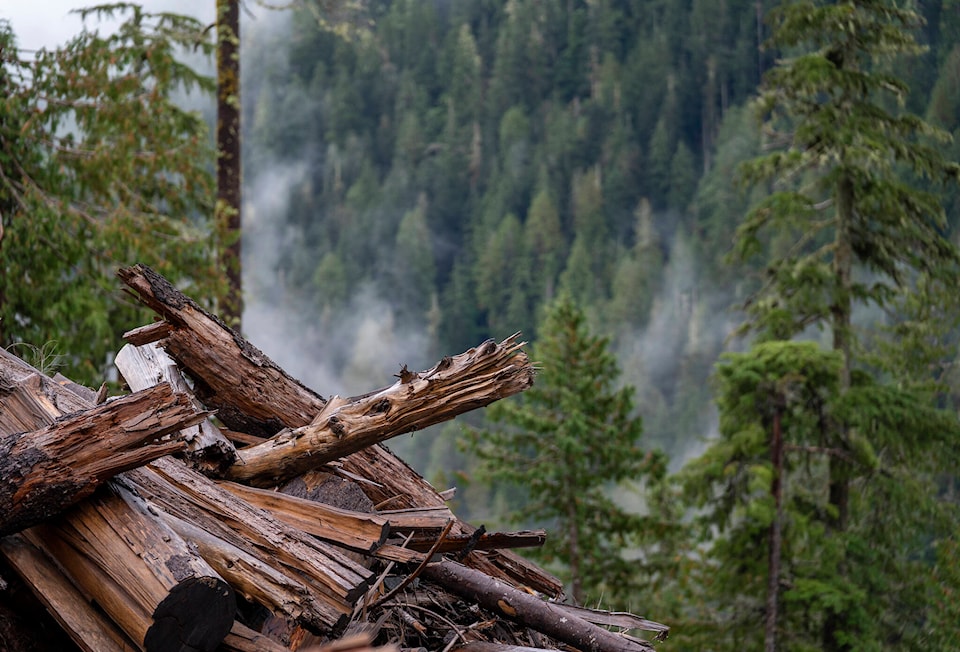An environmental organization is accusing the B.C. government of delays when it comes to protecting old-growth following the release of a forestry progess report.
But government says that reports details “unprecedented action” to conserve B.C.’s oldest forests.
The report tracks government’s implementation of the 14 recommendations from the Old-Growth Strategic Review. They include the temporary deferral of millions of hectares of old-growth forest from logging until the creation of a long-term management plan.
While government released the review’s final report in September 2020, parts of the opposition and environmental groups have since accused government of dragging its feet, a charged renewed by the Wilderness Committee.
“This is classic 1990s-style ‘talk-and-log,’” Tobyn Neame, forest campaigner, said. “The endless delays from the B.C. NDP are resulting in the destruction of irreplaceable forests they vowed to protect.”
The group paired this assessment with calls for “emergency measures to prevent more old-growth forests and other biodiverse ecosystems from being lost because of these delays.” Such measures could include the deferral of all at-risk old-growth forests and other interim measures to prevent additional loss of biodiversity while government develops long-term use plans.
Forests Minister Bruce Ralston, however, defends the report and the pace of the work.
“Our update details the work underway on all the recommendations from the old-growth strategic review,” he said. “This includes unprecedented action to conserve our oldest forests through the ($1-billion agreement with Ottawa and First Nations), expand actions to prevent wildfires and improve mapping, data and forest research.”
Ralston’s ministry also points out that ending all old-growth logging was not among the recommendation of the review, adding that the review specifically stated some harvesting in some areas was possible and necessary.
One of the central points of contention between environmentalists and government concerns the location of deferrals.
While the Wilderness Committee acknowledged the deferral of more than two million hectares — government speaks of 2.44 million hectares — the group says it is not clear where those deferrals apply.
“The government has been entirely opaque about where the majority of deferrals have been implemented,” Neame said.
Ralston’s ministry said the province agreed to keep temporary deferral areas confidential to support talks with First Nations, pointing to many areas where multiple First Nations have overlapping claims. As long-term measures are confirmed, geographic areas are confirmed, the ministry said.
According to the ministry, deferral discussions continue with 70 per cent of First Nations as of March 2024. Sixteen per cent of those talks are done and nine per cent of First Nations do not have old-growth forest in their territory.
RELATED: Less than 1/3 of B.C.’s Old Growth Management areas are old growth: watchdog
Another contested points concerns what should be protected.
Neame said 1.4 million hectares of at-risk priority-for-deferral old-growth remains open to logging. This figure refers to the amount of old-growth the review’s technical advisory panel identified for deferral, not yet deferred.
Another 1.23 million hectares identified by the panel were deferred while First Nations had identified another 1.21 million hectares not part of the areas identified by the panel.
The forests ministry said “conversations with First Nations regarding their approach to deferrals are continuing at a local level” but it is not clear when those conversations will wrap up.
The ministry said it is working directly with First Nations, who hold “a diversity of perspectives and know their territory.” While many support deferrals identified by panel, others don’t support proposed deferrals and prefer to continue what the ministry calls “forest activity.” Some have also said that old-growth outside of panel-identified areas should be deferred instead.
According to government, about 20,600 hectares (0.8 percent) of the 2.6 million hectares identified by the panel as priority at-risk forest has been harvested based on satellite imagery acquired as recently as June 30, 2023.
B.C. is home to 11.1 million hectares of old-growth forest on publicly managed lands, according to government. This figure amounts to about 20 per cent of B.C.’s forests, but critics say government has inflated the numbers, with assessments pegging the percentage share of genuine old forest in the single digits.
Some 7.6 million hectares are considered “at-risk old growth” with five million unprotected with 4 million hectares considered “priority at-risk old growth,” according to government.
The panel ultimately recommended 2.6 million hectares of those 4 million to be deferred. Overall, government says 80 per cent of all the old growth forest on publicly managed lands in the province is currently not threatened by logging because it is already protected, deferred from harvest or not economic to harvest.
Such figures are unlikely to ease the fears of environmentalists, who see the current process of temporary deferrals and discussions with First Nations as a stall tactic, accusing government of succumbing to corporate pressure.
“Ultimately, the B.C. government is attempting to thread the needle and appear as if they are taking action by discussing intentions on old growth logging while neglecting to follow through with real action,” Neame said.
